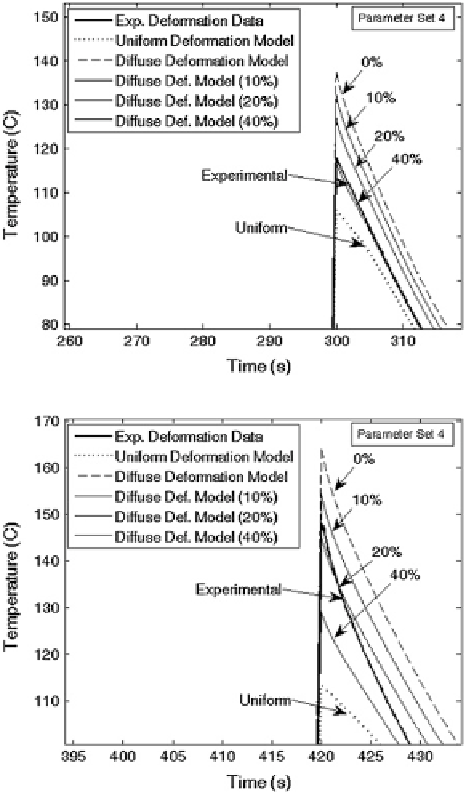Civil Engineering Reference
In-Depth Information
Fig. 6.15
Strain input
sensitivity for diffuse
deformation model versus
experimental results at fifth
application of current (300 s)
[
4
]
Fig. 6.16
Strain input
sensitivity for diffuse
deformation model versus
experimental results at
seventh application of current
(420 s) [
4
]
6.1.4 Thermal Model Conclusions
The thermal response is an important aspect to consider during EAF as this is a cou-
pled thermal-mechanical process. As a result, this section examined and successfully
modeled the thermal response of sheet metal subject to EAF and established mod-
els that can predict the response for stationary tests as well as deformation tests for
varying electrical testing conditions. It was shown that there is good agreement with
the model as compared to the stationary response with an applied electrical current.
However, for consideration of deformation during the process, the diffuse model sug-
gests that a portion of the applied current goes directly into aiding deformation and
not into Joule heating. Overall, the output of this section is the creation of accurate
thermal response models which can be coupled with mechanical modeling for EAF.

